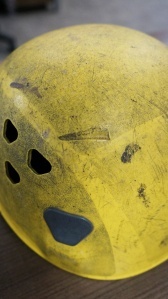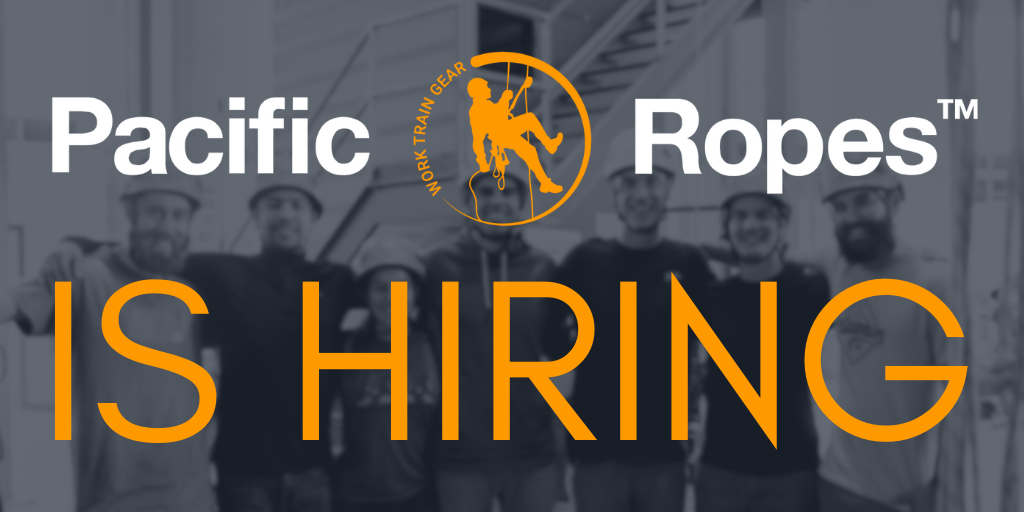According to the IRATA Work and Safety Analysis in 2016, there were 32 cases of falling or dropped objects. 24 of those cases were items dropped by technicians and the rest were from falling debris. In 2017, there were 19 cases of dropped objects, 18 of these cases were items dropped by technicians.
Yikes.
You could interpret these statistics as quite "good" considering the large presence of the IRATA membership (353 companies and growing)! But, as a technician, would you even want to take the chance of being included in the IRATA dropped objects statistic? Considering the consequences could be losing your job, injuring a third party, or causing significant equipment damage? So how can you and your team prevent this from happening?
Hierarchy of Controls
Similar to the Hierarchy of Fall Protection, the risk incurred by dropped objects can be managed by taking on a hierarchical approach. The goal is to minimize the distance and the consequences of a falling or dropped object. Going in order of priority, first you want to try to avoid the hazard (Using Elimination). If that isn't possible, then you want to try to prevent the hazard (Using Engineering or Administrative Controls) . If this isn't possible, then the last solution is to mitigate the hazard (Using PPE).
The controls can be implemented as a collective group (ex. installing safety nets), while other controls are personal (using tool lanyards). Depending on the job, location, and work scope, your team lead will use a combination of various controls to minimize the potential of dropped objects.
There are two types of falling objects.- 1) Static-An object dropped from a previous static position under it's own weight. For example, fasteners come loose and the object breaks a part.
- Dynamic-An object that drops due to a force. Ex. Person, wind, equipment, machinery
Elimination Controls
The best control or solution is to eliminate the hazard or avoid it completely. Pre-job checks or site surveys should include looking for potential problems, especially if there's been a period of bad weather or other companies working in the area.
Personally, it's a good idea to make sure your pockets are empty and inspect all your tools to ensure nothing seems loose or unsecured.
Ultimately, don't try to carry more than you can handle.
Engineering Controls
If you can't avoid the dropped objects, then engineering controls are your next best solution. This includes using your equipment to reduce the risk if a fall were to occur. Examples include:
- temporary covers being placed around and/or over openings;
- work clothing has pockets these should be capable of being securely closed; preferably, don't put loose items in pockets;
- tools being transported in securely closed containers, e.g. when being lifted between levels;
- lightweight hand tools, communication equipment, etc. being tethered to the technician;
- replacing a hand held torch with a helmet mounted head torch;
- heavier tools and components being separately tethered;
- using safety netting to catch tools or equipment that cannot be tethered, e.g. bolts;
- providing ‘hard’ barriers, toe boards, etc. to form an exclusion zone, where it is not possible to prevent dropped objects.
Administrative Controls
Administrative Controls should be used with the other fore mentioned controls. Examples include:
- information and warnings to technicians about hazards that are present;
- procedures and instruction on how to carry out the work safely;
- supervision to ensure that any procedures are being followed;
- management processes to determine any ‘lessons learnt’.
- warning signs, to highlight any hazards to the workers;
- planning activities to avoid situations where work is being carried out at multiple levels simultaneously;
- lookouts to prevent people entering an area below where technicians are working;
- high levels of workplace housekeeping, i.e. keeping works areas clear of loose material or objects;
- operating systems to check that all tools and components have been removed from, or secured in, the work area prior to completion of the task;
- processes for reporting, investigating and learning from hazardous observations and incidents involving falling objects (and developing a culture in which reporting is encouraged).
PPE (Personal Protective Equipment)
Helmets, helmets, helmets!! This is considered the last method of protecting an employee. And, should be used in conjunction with other controls. Industrial safety helmets provide limited protection only, due to the high level of kinetic energy
that falling and dropped objects possess. A helmet protects the head only, so other areas of the body are unprotected from dropped objects and serious injuries can easily be suffered, e.g. face.
Here is an example of what a helmet looked like after some concrete fell on a technician's head Click to read the story!
** This toolbox talk was created based on the IRATA Topic Sheet #11-Dropped Objects. To use this toolbox talk at work, please click here to download the IRATA Topic Sheet No. 11-Dropped Objects. At the end of this document is a form in which you can use to record the Toolbox Talk.
Whenever upgrading or recertifying, we reinforce these habits but it is up to you to make it a habit. If it has been too long, it may be time for a refresher to get rid of some old habits or to be reminded of some that you've forgotten about! Register with us for a refresher day to be on top of your Rope Technician game!




